What to Know about Essential Oils

DESCRIERE
The authors determine the chemical constituents and evaluate the anti-pain properties of essential oils from Thuja plicata var.
The chemical composition, antimicrobial activity and mosquito larvicidal action of essential oils from the leaves, pseudo-stem, rhizome and fruits of Alpinia malaccensis grown in Vietnam is also discussed.
Essential oils are explored in the context of their ethnobotanical survey in the treatment of one or more gastrointestinal troubles.
The medicinal benefits of lemon, lavender and peppermint essential oils are described. Further research should be performed to discover more uses for these oils so that we can gain the most benefit from use.
Later, the medicinal uses of essential oils from ancient times to the present are highlighted, particularly their mosquito repellent activities, toxicity and side effects.
The in vitro and in vivo pharmacological activities of Jasminum grandiflorum are assessed, and current insights are provided with regards to clinical efficacy and safety.
A critical overview is provided focusing on the diverse roles of the most abundant compounds in essential oil samples as determinants of the influence of impact notes and biological activities, calling for genuine and reproducible characterisation of such dominant compounds.
In the penultimate chapter, an integrated summary of the authors’ experimental findings from an analysis of the community of fluorescent Pseudomonas strains in the rhizosphere of commercially grown Mentha piperita is presented.
(Imprint: Nova Medicine and Health)
Preface
Chapter 1. Are Essential Oils Potential Antihypertensive Agents?
(Jorge M. Alves-Silva, Carla Marques, Lígia Salgueiro, Henrique Girão and Mónica Zuzarte, Faculty of Pharmacy of the University of Coimbra, University of Coimbra, Coimbra, Portugal, University of Coimbra, Coimbra Institute for Clinical and Biomedical Research (iCBR), Faculty of Medicine, Azinhaga de Sta Comba, Coimbra, Portugal, University of Coimbra, Center for Innovative Biomedicine and Biotechnology (CIBB), Portugal, and University of Coimbra, CIEPQPF, Faculty of Pharmacy, Azinhaga de S. Comba, Coimbra, Portugal)
Chapter 2. Pharmacology of Essential Oils: Chemical Constituents, Anti-Inflammatory and Anti-Nociceptive Activities of Essential Oils from Nigerian Plants
(Opeyemi Nudewhenu Avoseh, Isiaka Ajani Ogunwande, Assumpta Ebere, Nasira Gbemisola Hassan, Do Ngoc Dai, Ascrizzi Roberta and Flamini Guido, Department of Chemistry, Faculty of Science, Lagos State University, Lagos, Nigeria, and others)
Chapter 3. Biological Potentials of Essential Oil: Antimicrobial Activity, Larvicidal Efficacy and Chemical Compositions of Essential Oils from Alpinia malaccensis (Zingiberaceae) from Vietnam
(Do Ngoc Dai, Le Thi Huong, Nguyen Huy Hung, Hoang Van Chinh and Isiaka A. Ogunwande, Faculty of Agriculture, Forestry and Fishery, Nghe An College of Economics, Vinh, Nghe An, Vietnam, and others)
Chapter 4. Essential Oils: Therapeutic Effects as Anthelmintics
(Akinsola A. Akande and Sherifat A. Aboaba, Department of Chemistry, University of Ibadan, Ibadan, Nigeria)
Chapter 5. Medicinal Benefits of Lemon, Lavender and Peppermint Essential Oils
(Danielle McGlynn, Kayla Broscious, Alexandra Ruth and Ajay Bommareddy, Department of Pharmaceutical Sciences, Nesbitt School of Pharmacy, Wilkes University, Wilkes-Barre, Pennsylvania, US)
Chapter 6. Relevance of Essential Oils in Food Preservation, the Extension of Shelf Life and Post-Harvest Research, Therapeutic Effects, Wound Healing, Aromatherapy, Mosquito Repellent and Bee Behavior: A Review
(Olufunke O. Fajinmi and Johannes Van Staden, Research Centre for Plant Growth and Development, School of Life Sciences, University of KwaZulu-Natal, Pietermaritzburg, South Africa)
Chapter 7. Jasminum grandiflorum Essential Oil: Chemical Constituents, Multiple Biological Activities With Health Promoting Effects
(Hajer Riguene, Ghayth Rigane and Ridha Ben Salem, Faculty, Organic Chemistry Laboratory LR17ES08, Chemistry Department, University of Sfax, Sfax, Tunisia, and others)
Chapter 8. The Role of Characterised Most Abundant Compounds on Impact Notes in Essential Oil Research with Bioactivity Aspects
(Dorcas Olufunke Moronkola, PhD, Emmanuel Onah Ojah, Clement Odunayo Ajiboye, Oluwafunmilola Elizabeth Akinpelu and Olusegun Ekundayo PhD, Department of Chemistry, University of Ibadan, Ibadan, Nigeria)
Chapter 9. Increase of Essential Oil Yield in Mentha piperita by Inoculation with Plant Growth-Promoting Rhizobacteria
(Lorena del Rosario Cappellari, Maricel Valeria Santoro, Julieta Chiappero, Tamara Belén Palermo and Erika Banchio, 1-INBIAS Instituto de Biotecnología Ambiental y Salud, Campus Universitario, Río Cuarto, Argentina, and others)
Chapter 10. Taking Advantage of Some Essential Oils Containing Phenylpropanoids/Terpenoids as Renewable Chemical Reagents for Fine Synthesis of Heterocycles
(Vladimir V. Kouznetsov, Amner Muñoz-Acevedo, Martha Cervantes-Díaz, María C. González and Leonor Y. Vargas-Méndez, Laboratorio de Química Orgánica y Biomolecular, Universidad Industrial de Santander, Parque Tecnológico Guatiguará, Piedecuesta, Colombia, and others)
Index
Categorii de carte
-Comandă specială
-Edituri
-Promo
-Publicaţii Callisto
-Cărţi noi
-- 585,90 leiPRP: 651,00 lei
- 630,00 lei
- 1102,50 lei
Promoţii
-- 585,90 leiPRP: 651,00 lei
- 652,05 leiPRP: 724,50 lei
- 415,80 leiPRP: 472,50 lei


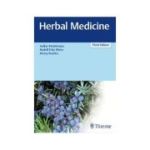
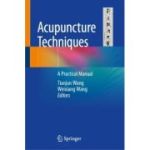
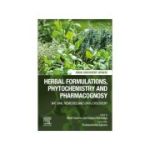



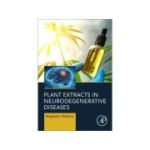
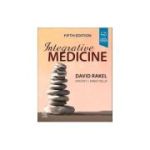

REVIEW-URI